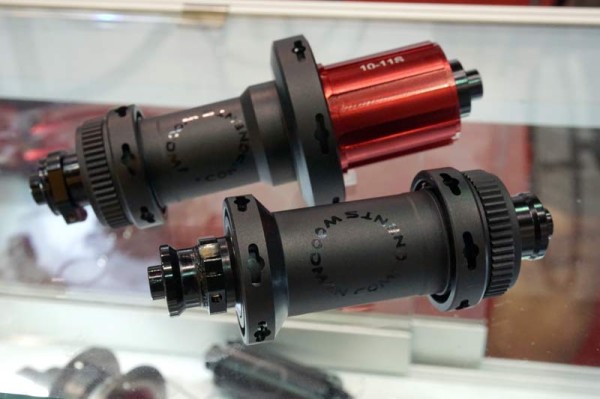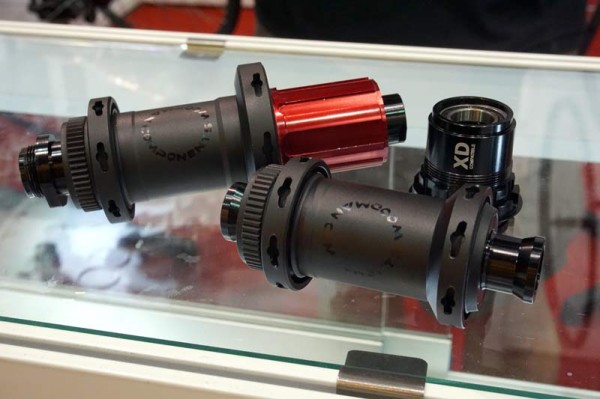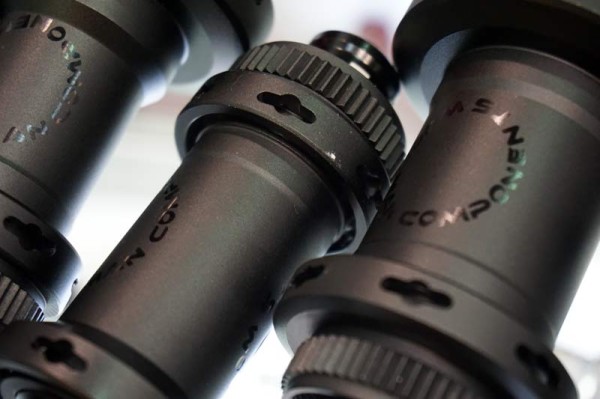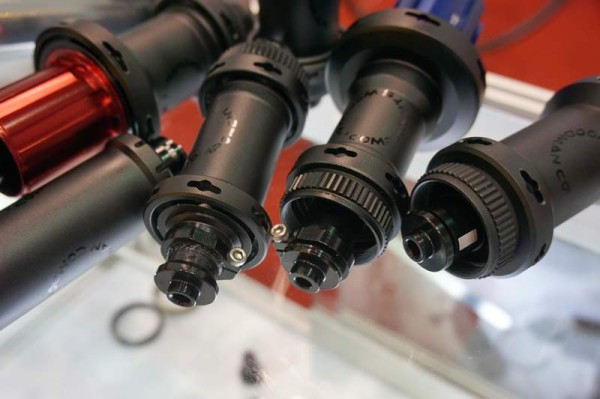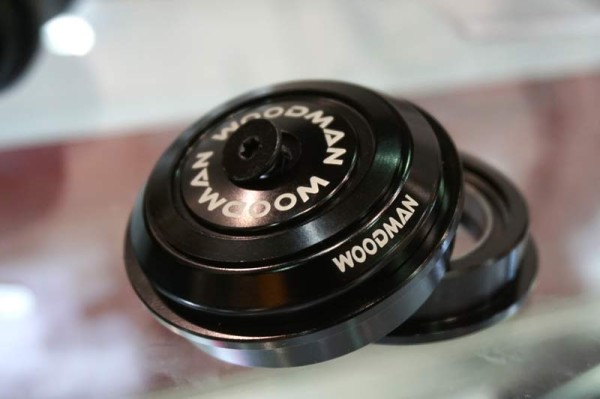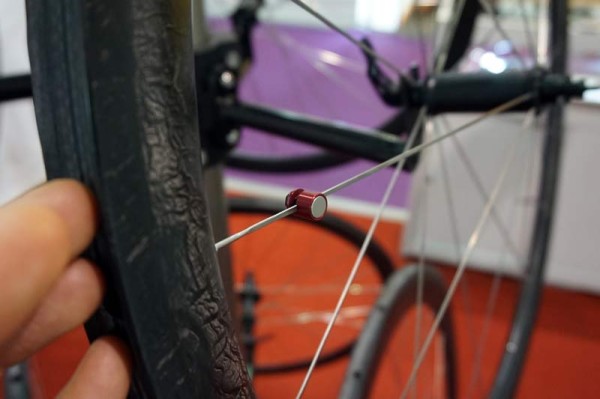Woodman has revised his hubs and added two new disc brake models, one for road and one for mountain bikes. Both use a Centerlock rotor mount.
Both also get a new external preload adjustment that allows you to adjust it while the wheel is in the frame. That way, it accounts for the pressure the skewers or thru axles are putting on the hub and keep the wheels spinning freely without any bearing play.
The road disc hubs are shown above. Detail pics of the rest, plus new headsets and more, below…
The mountain bike hubs have slightly fatter hub shells and work with thru axles or QR. An XD driver body is also available.
The slots use J-bend spokes, with one spoke sliding into each side of the groove to lock itself into place once under tension.
The preload adjustment screw is easily accessible when the wheel is in the frame. Just thread it in until the proper preload is achieved, then tighten the pinch bolt.
Retail for the hubs is $350 for the pair, road or mountain disc wheelsets. Non-disc road hubs are $300. Ceramic bearings are an optional upgrade. Weights from our scale are:
- MTB front thru – 106g
- MTB Rear thru – 267g
- Road Front – 99g
- Road Rear – 214g (w/ ceramic bearings and Shimano freehub)
- Road Rear – 237g (w/ steel bearings and Campy freehub)
- Cyclocross front QR disc – 124g
- Cyclocross Rear QR disc – 253g
There’s now a headset for the new Specialized DH bikes that have a 56mm inside headtube diameter.
Thanks to swappable inner top caps, the same bearings and bodies will fit either 1-1/8″ or 1.5″ steerers.
At Eurobike 2013, we showed you his Cadenz magnets that fit into the open end of the pedal spindle to provide a stealthy way to signal your cadence sensor. He also had his spoke magnet that fits any round or flat spoke thanks to shaped inside faces and a wide alloy bolt that gives it plenty of clamping range.
The Cadenz magnets get an update, adding a larger option to fit pedals with larger 8mm openings. It has a rubber O-ring with a threaded plate that fits into the hex shape of the pedal’s spindle, and as you turn the magnet body it tightens and expands the O-ring to hold itself tight into the spindle.
